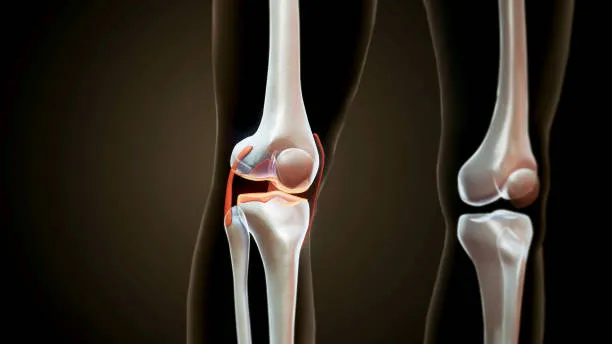Knee replacement surgery (also known as total knee arthroplasty) is a highly successful procedure designed to relieve chronic knee pain and restore mobility. First performed in 1968, it has advanced over the years to become one of the most reliable orthopedic treatments.
This surgery is recommended when arthritis or a severe knee injury causes pain and stiffness that no longer respond to medicines or physiotherapy.
During the procedure, the damaged parts of the knee joint are replaced with durable metal and plastic implants, creating a smooth, pain-free joint that allows for better movement and daily activity.

Types of Knee Replacement Surgery
Choosing the right type of knee replacement surgery depends on your knee condition, level of damage, age, and lifestyle. Below are the most common knee replacement options performed by leading orthopedic surgeons in India.
1. Total Knee Replacement (TKR)
Also known as total knee arthroplasty, this is the most common and effective type of knee replacement.
The entire knee joint — including the thigh bone (femur), shin bone (tibia), and kneecap (patella) — is replaced with high-quality metal and plastic implants.
Ideal for patients with severe arthritis or joint damage affecting the whole knee.
Provides long-term pain relief and restores full mobility.
Keywords: best total knee replacement, advanced knee implant surgery in India
2. Partial Knee Replacement (PKR)
In this procedure, only the damaged section of the knee is replaced — the healthy bone and tissue remain intact.
Offers faster recovery and more natural movement.
Recommended for patients with osteoarthritis limited to one part of the knee.
Keywords: partial knee replacement cost, minimally invasive knee surgery, unicompartmental knee replacement
3. Revision Knee Replacement
This surgery is performed when a previous knee implant fails due to wear, loosening, or infection.
The old prosthesis is carefully removed and replaced with a new, durable implant.
More complex than the initial surgery, but restores function and comfort.
Keywords: revision knee surgery in India, second knee replacement, failed implant treatment
4. Bilateral Knee Replacement
In a bilateral knee replacement, both knees are replaced — either during the same operation (simultaneous) or in two stages (staged procedure).
Suitable for patients with severe arthritis in both knees.
Helps regain balance and walking ability faster compared to two separate surgeries.
Knee Replacement Surgery Procedure
Knee replacement surgery is performed to remove the damaged parts of the knee joint and replace them with artificial components (implants) made of metal and high-grade plastic. The goal is to restore smooth movement, reduce pain, and improve joint function.
Step-by-Step Procedure
Anesthesia
The patient is given either spinal or general anesthesia to ensure a pain-free surgery.
Incision
A small incision (around 6–10 inches) is made on the front of the knee to access the joint.
In minimally invasive surgeries, smaller cuts are used for quicker recovery.
Removal of Damaged Tissue
The surgeon removes the worn-out cartilage and damaged bone from the ends of the thigh bone (femur) and shin bone (tibia).
Implant Placement
The metal components are fixed to the prepared bone surfaces.
A plastic spacer is inserted between them to create a smooth, gliding joint.
Kneecap Adjustment (if needed)
In some cases, the underside of the kneecap (patella) is also resurfaced with a plastic component.
Closure
The incision is closed with sutures or staples, and a sterile dressing is applied.
Recovery and Rehabilitation
Patients usually start walking with support within 1–2 days.
Physiotherapy helps strengthen the muscles and improve flexibility.
Full recovery generally takes 6–12 weeks.
Results
After a successful knee replacement:
Knee pain is greatly reduced or eliminated.
Mobility and joint function improve significantly.
Most implants last for 15–20 years or longer with proper care.